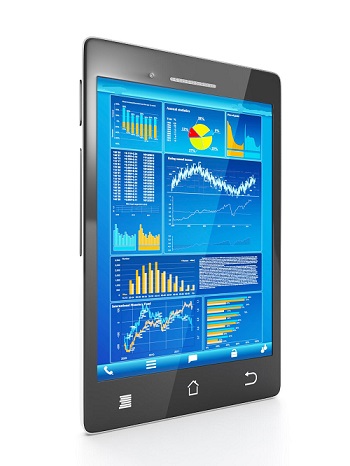A new report by Outsell has shown that digital ad budgets will rise, while print ad spending will fall.
Outsell has now released a report that has shown that digital and mobile advertising budgets will be increasing in 2016 while at the same time the amount of budget dedicated to print ads will be on their way down.
The research looked into the spending preferences of marketers, finding that top priority went to companies’ own sites.
After websites, the next largest amount of the ad budget went to television and e-mail marketing. That said, the report pointed out that social marketing was a growing trend. Mobile advertising would be seeing a significant boost in the amount companies were dedicating specifically to that channel, as well. That said, on the flip side of the coin, non-digital methods of advertising, such as custom print, direct mail, print directories, and ads placed in newspapers and magazines are all continuing to droop due to a growing consumer dependence on digital techniques for placing brands and messages in front of consumers.
Mobile advertising comes with the significant advantage of placing ads in front of consumers at any time.
 This is something that print simply cannot achieve. Social is particularly effective in that effort, especially over platforms such as Facebook and Twitter as companies seek to boost engagement with their target market through the new social brand building and lead generation tools that are now easily accessible to businesses of all size.
This is something that print simply cannot achieve. Social is particularly effective in that effort, especially over platforms such as Facebook and Twitter as companies seek to boost engagement with their target market through the new social brand building and lead generation tools that are now easily accessible to businesses of all size.
Outsell’s report predicted that mobile marketing advertising spending could increase by 38 percent by the close of the year. Social ad spending will also be increasing, but by 15 percent.
Mobile advertising will have risen to $23 billion in spending and is now considered to be the fifth largest form of digital marketing, immediately after social and search. Marketers appear to have made the discovery of its true value in 2015 and are now scrambling to use this channel to be able to reach consumers through a range of different ad formats. Fifty four percent of marketers have said they will be focusing their mobile ad spend on various types that reach consumers by way of apps.
A recent Leanplum analysis of 671 million push notifications has revealed that smartphone ads are just scratching the surface.
Mobile marketing automation platform, Leanplum, has announced that it has completed its first research study, which it has published under the title “Breaking Barriers to Push Notification Engagement.”
This research determined that the majority of push notification users were not reaching their potential.
The study was based on the results of an analysis conducted by Leanplum, which examined 671 million push notifications and 1.4 billion in-app events. What they found was that while there is a great deal of potential to mobile marketing through push notifications, the majority of the marketers around the world who were using this technique were not living up to that potential. The analysis determined that, as a whole, approximately 63 percent of marketers were missing their targets when it came to the messaging itself, the frequency of their marketing efforts via mobile apps, and even their timing.
There were a number of key findings that may provide helpful insight to mobile marketing firms.
 Among the key findings from Leanplum’s study were:
Among the key findings from Leanplum’s study were:
• North American app marketers were especially prone to missing engagement opportunities with their users during evening hours. App users in that region typically open push notifications at 8 p.m. at a rate that is four times greater than the ads are actually being sent.
• In terms of notifications sent versus those that were opened, the times marketers were issuing their push notifications and the times at which users were actually most likely to open and engage with them were not synchronized. This was a worldwide issue based on out-of-date messaging strategies.
• Mobile marketing firms often fail to shift their efforts with time zones. For example, marketers focusing on Europe, the Middle East and Africa (EMEA) are sending pushes that are reaching people at midnight, while the majority of recipients are sleeping, since they are aiming at reaching people during peak North American times. A change in the timing of push notifications based on the time zones in which the recipients reside could greatly enhance engagement results.
 This is something that print simply cannot achieve. Social is particularly effective in that effort, especially over platforms such as Facebook and Twitter as companies seek to boost engagement with their target market through the new social brand building and lead generation tools that are now easily accessible to businesses of all size.
This is something that print simply cannot achieve. Social is particularly effective in that effort, especially over platforms such as Facebook and Twitter as companies seek to boost engagement with their target market through the new social brand building and lead generation tools that are now easily accessible to businesses of all size.
 Among the key findings from Leanplum’s study were:
Among the key findings from Leanplum’s study were: